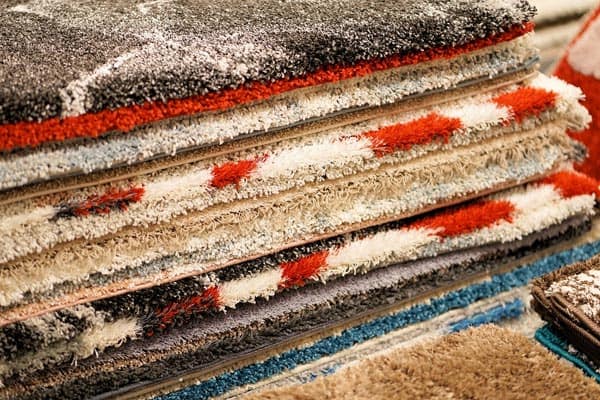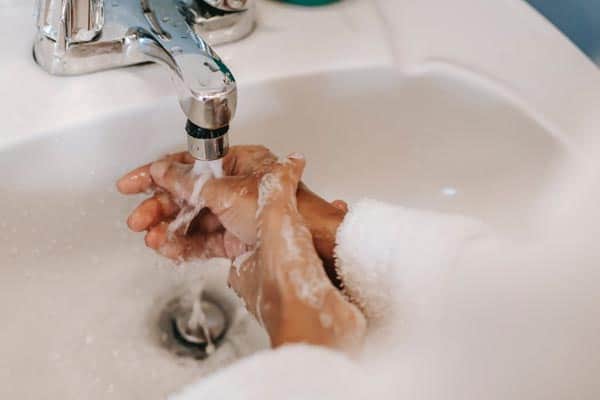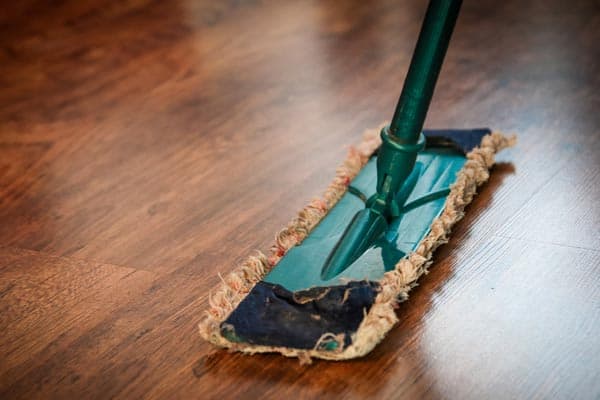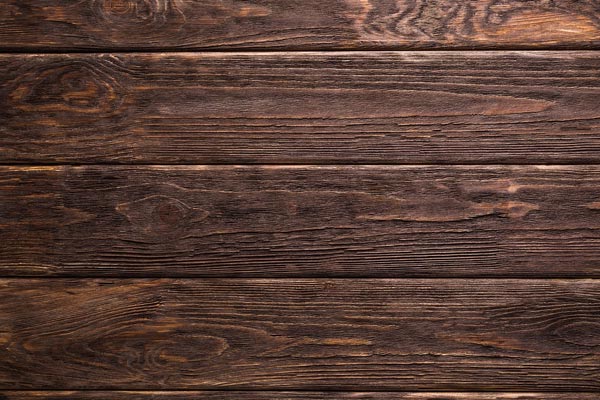Several Ways How to Get Marker Off Wood
We’ve all had the moment when you’ve discovered your permanent marker is bleeding through the paper and all over the desk, or you could find that your toddler decided to turn your hardwood floor into a canvas.
While it’s possible that ink can severely damage some surfaces, you can remove it from most wooden surfaces with a little bit of elbow grease and patience.
How to Get Marker Off Wood
Acetone-based nail polish remover, rubbing alcohol, vodka, hairspray, baking soda, dry-erase markers, melamine foam, fine-grit sandpaper, toothpaste, and more all work on your wood floors or furniture.
There are different types of wood you have to consider too, and this impacts how to lift the ink stains from the wood without causing any damage to it.
We’re going to outline how to get markers off wood using several different techniques, household cleaners and items, and how you can return the wood to a natural, shiny state.
Common Types of Wood
There are several types of hardwood floors and wood furniture; however, it all works the same when you remove permanent markers from it. The types of wood we’re going to talk about here are different.
The only big difference between traditional wood types like birch or oak is the hardness factor, with harder wood being less absorbent. Softwoods work to absorb stains faster and deeper, but this is only true if the wood is unfinished.
Real Wood Versus Laminated Wood
This one is confusing to understand, but some countertops, floors, cabinets, and furniture aren’t actually real wood. They may look like it, but laminated wood or laminate gives them this look while making it easier to deal with.
Finished wood comes with a stained layer on it, while laminated wood has a layer of material that is separated from the wood.
So, if you get a marker on it, it’s fairly easy to remove it without causing any damage. Laminated wood could wipe away like a dry-erase board too.
If you have real wood instead of laminated wood, you’ll have a much bigger problem. Before you start trying to remove the marker, you need to know if you’re working on unfinished or finished wood.
Finished Wood Versus Unfinished Wood
Finished wood will have a layer of wax, lacquer, or varnish on it, and this is a good thing because the marker won’t get directly on the wood itself.
This also means that you have to be careful not to scratch the finish or remove it when you remove the marker.
Try using mild options instead of very strong ones to prevent stripping the finish off. When it comes to unfinished wood, the rules will change.
When you don’t have finished wood, it’ll absorb whatever it touches. If it gets wet, it’ll get soaked, and when it gets marked, the marker will seep and bleed. This means that it’s much harder to remove the market, but it’s not impossible.
You can be slightly more intense in your efforts to remove things from unfinished wood, but you have to be careful not to damage the wood’s integrity.
The same rules apply to painted and unpainted wood. Painted wood has more protection, but it’s possible to damage this coat when you clean it.
Rubbing Alcohol
Regular rubbing alcohol is very effective and affordable when you’re looking for solutions to get marker stains out of wood.
Get some rubbing alcohol from your bathroom and pour it into a dry, clean cotton cloth. Dap at the spot with your cloth until you start to lift the stain out of the wood, and then you’ll wipe the residue away with a slightly damp cloth and pat it dry.
It could take a few rounds to remove the stains and stop applying alcohol if you notice discoloration and stains on the cloth.
Vodka
Vodka is a classic spirit that can be a highly effective cleaner to use on permanent marker stains, and you should go for plain vodka while making sure to avoid flavored ones. The sugars in these vodka stains can make your stains worse.
Like using rubbing alcohol, you should soak a dry, clean cotton cloth in vodka before lighting dabbing at the stain. You should notice that the market lifts from the wood surface onto your cloth.
Nail Polish Remover
If an acetone-based nail polish remover can cut through gel manicures, it can get permanent marker off wood too. Use a dry, clean cloth to dab lightly at the stain, and you dipped in your acetone-based nail polish remover.
Avoid rubbing the stain because this nail polish remover can damage your wood finish. You should test this in an inconspicuous spot before you work on the main area to test for discoloration or stain.
Hairspray
Hairspray is another staple in your medicine cabinet, and it can do a lot more than keep your hair in the perfect place.
In fact, hairspray can remove all types of stains, from permanent markers on wood to Pen ink in different fabrics.
All you have to do is spray the ink stain with a little bit of hairspray before wiping the residue away with a clean cloth. The stain should start to lift immediately.
Baking Soda
Baking soda acts as the centralized ingredient in a host of different household cleaners, and it can be a tough stain remover.
You’ll start by creating a paste using baking soda and water before gently rubbing it into the marker stain using circular motions.
If you don’t have baking soda handy, you can use regular non-gel toothpaste to create the same effect.
Melamine Foam
Also known as Magic Erasers, melamine foam can be used to remove spots from finished wood surfaces.
Stick to very gentle spot treatments because rubbing the surface too hard can cause damage by lifting the finish from the wood.
Dry-Erase Markers
If you’re feeling a little bolder and you have a wood surface that has an opaque stain, you can try drying over the permanent marker with a dry-erase marker. Then, wipe the markings away.
Even though it seems counterintuitive, it will often work on a finished surface. Don’t try this on unfinished surfaces.
Fine Grit Sandpaper
You should only use fine-grit sandpaper on unfinished wood because using it on stained or finished wood will remove the stain, finish, or paint.
However, if you need to remove permanent markers from lumber or unfinished wood, try this method.
Markers can seep through unfinished lumber or wood, and sanding the area will help gently remove a few minor layers of the wood’s surface to lighten up the stain. Avoid sanding it too aggressively to avoid wearing the surface in one spot.
If you’re trying to remove permanent markers from a wood surface, you’ll have to go through several rounds of very gentle cleaning using a dry, clean cotton cloth.
Avoid scraping or rubbing at the stain, especially with abrasive cloths, brushes, or sponges. Always test your solutions on a hidden spot to ensure it doesn’t cause damage to your item’s surface or finish.
Hand Sanitizer Gel
An alcohol-based hand sanitizer gel can help lift permanent marker spots from wood. Drip a little bit of this gel onto the surface of the affected spot and use a very soft cloth to wipe the gel and stain away.
Toothpaste
A baking-soda based toothpaste will work decently to help lift your permanent marker stains. Gel toothpaste won’t do the job, but you can try baking soda-based whitening toothpaste varieties will do.
Dry-Erase Board Cleaner
The solvents found in spray cleaner used on dry erase boards are helpful for removing permanent markers from wood for polished wooden surfaces.
You could also have luck going over the markings using a dry erase marker, especially if the wood surface is coated or painted with an opaque stain. Don’t use this on unfinished or natural wood surfaces.
Tips and Warnings
Just like every home care technique, there are warnings to consider before you start to try and remove permanent marker stains from wood.
Make sure you go over these warnings and tips before you attempt any of them to minimize the risk of damage.
No Scrubbing
As tempted as you might be to grab a scrub brush and use it, resist. Scrubbing hard can strip stains and damage wooden surfaces.
If you want to scrub, make sure you do so very gently using a soft, clean sponge or a microfiber cloth.
Sandpaper
Sandpaper is a great way to help get rid of stains. Use it before and after you remove your stain-removing substance from the wood.
Just be careful because it can strip off paint or other finishes. The smaller the grain on your wood is, the safer it is to use sandpaper on.
Refinishing
If you scrub too hard or use alcohol and it strips away some of the paint or stain. It’s possible to refinish the spot when you finish removing the marker.
Use sandpaper to smooth the area out and figure out which finish or stain was originally on the wood. You can always get in touch with a professional to find out exactly what color you should buy.
Don’t Forget Your Skin
Chances are, you got a permanent marker on the wooden floor or furniture because someone dropped it. While many of the substances may work on the stain, they’re not safe to get on your skin.
However, to remove permanent markers from your skin safely, get a makeup remover and use it as instructed. Check the warnings on the bottle first
How to Permanent Marker from Wooden Furniture
It’s no secret that removing permanent marker stains from furniture can be difficult. However, if your table, door, or chair are worth it, you can try one of these tricks.
If your furniture has no upholstery, a good alternative to remove permanent marker stains is WD-40. This is a multi-purpose industrial oil that can lift any stain, and you can purchase it for cheap.
If your overall goal is to remove markers from wooden furniture, using common sense is a good step. Try an eraser first because some rubber erasers can help. They can fade spots without damaging the finish on your furniture.
Bottom Line
We’ve outlined several ways you can remove permanent markers from wood, and you can use each one to see how well they work for you. Some will work better than others, and you want to use care to ensure that you don’t want to damage the finish on the furniture.
Doing so will help you restore your wooden furniture or flooring to how it originally looked, and you can have the peace of mind that comes with knowing you don’t have any unsightly permanent marker stains showing.






